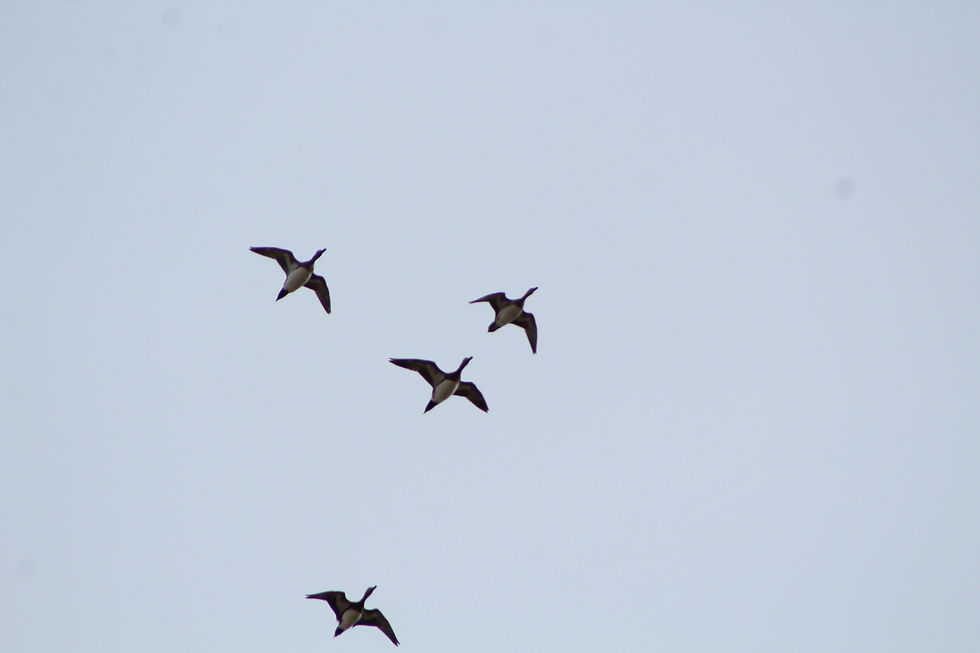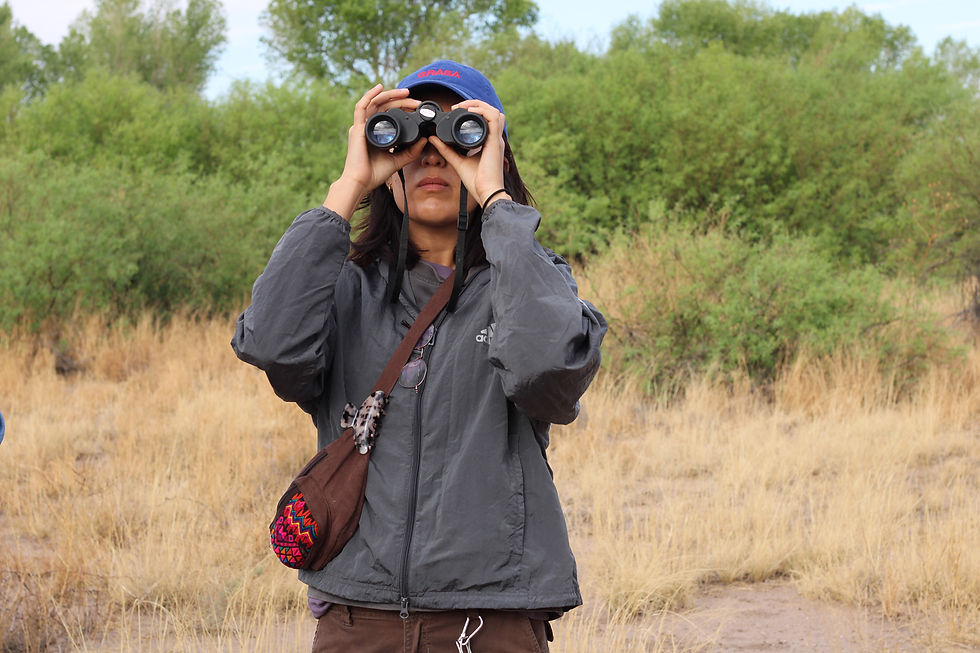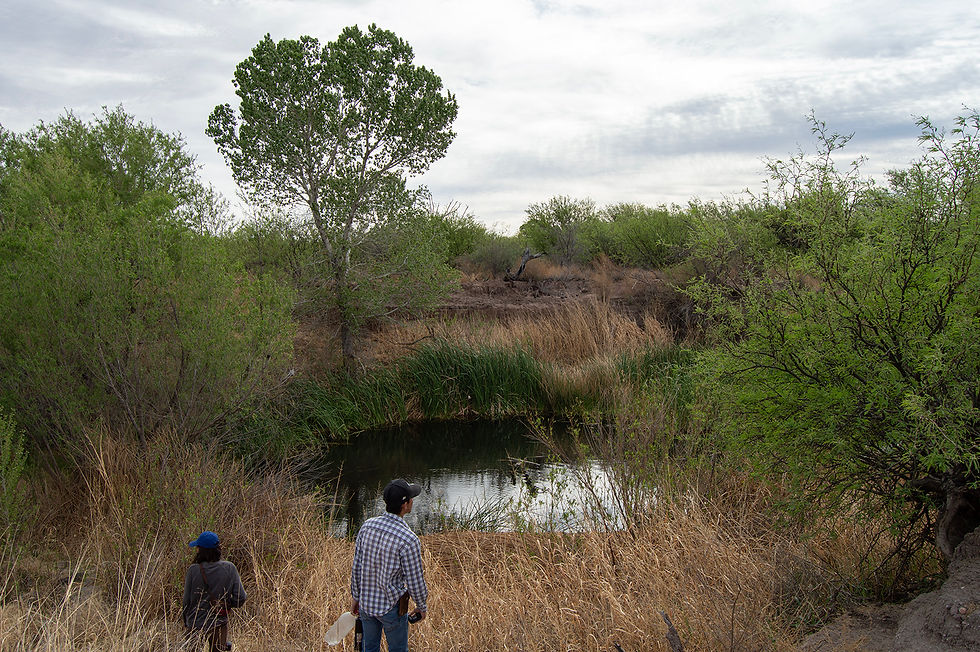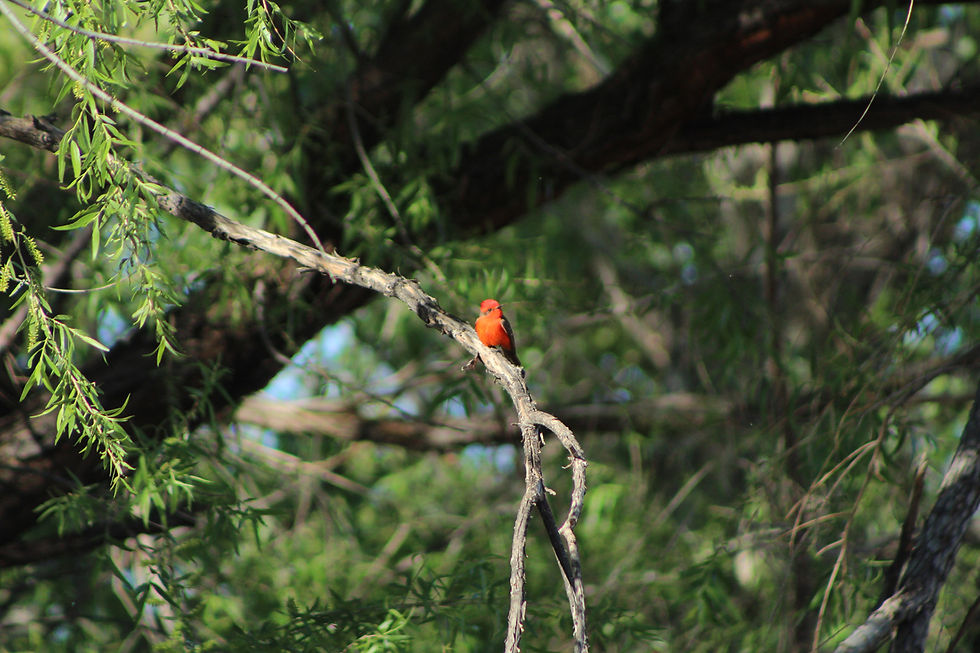Using sign language in birding fosters inclusion at the Borderlands Field Course
- Ivanna Tautimez

- Aug 11
- 4 min read
Para leer la versión en español, haga clic aquí.
Birds have been a huge part of my daily life for more than 5 years. As an environmental education worker, I constantly ask myself, “How can we make outdoor activity spaces that everyone enjoys, regardless of their background or physical ability?”

During a birding workshop in my city, Hermosillo, an attendee arrived in a wheelchair with his mother. When I saw him, I started thinking about how to adapt the practical part of the workshop, which would be the next day on a sandy trail, so that it would be accessible to everyone. When I got home, I did some research and discovered initiatives that promote inclusive outdoor activities. That experience motivated me to adjust the initial idea of the workshop and awakened in me the desire to think about the spaces around me with consideration of people with different abilities. That's how the workshop on inclusive birding was born.
Noiseless communication, deeper connection
Have you ever thought about how ramps, originally designed for people in wheelchairs, also benefit those who ride bicycles, scooters, carry suitcases, dollies, or walk their babies in strollers? This phenomenon is called the curb-cut effect. That is, an improvement designed for one group that ends up benefiting many more.
I think something similar happens with outdoor activities. It's not an issue of everyone being able to do all the activities, but of thinking about how to make these spaces more welcoming for everyone.

A personal example has been my experience in birding. I have begun to incorporate Mexican Sign Language (LSM) signs to name species. By learning the colors, bird names, and body parts, it is possible to combine these elements to refer to a particular species. I also enjoy this practice with other animals, as there is a greater variety of signs in LSM to refer to fauna in general.
Now, imagine the benefits of using signs in outdoor activities. When observing animals in their natural habitat, silence is key, as it reduces disturbance to the environment. So why not take advantage of LSM to supplement communication? This not only enhances the experience, but also opens the door to invite friends or people from the deaf community to share in the activity.

Inclusive birding during the Borderlands Field Course
A significant experience was during the Borderlands Field Course, where I had the opportunity to facilitate an inclusive birding workshop. Imagine a group of people with diverse profiles, from different disciplines, interests, and experiences, sharing time outdoors in incredible places. That's what this experience was like.
The fifth day of the course ended with a theory session. We talked about techniques for identifying birds, but we also spent time learning signs in Mexican Sign Language (LSM). The idea was to prepare us to experience nature from another form of communication, one that would not disrupt the environment or exclude anyone.

Wildlife, signs, and silence
The next day, we got up early. By 6:00 a.m., we were ready, prepared to sharpen our senses. The morning was cool and the sky was cloudy, which made the hike more pleasant.
We had barely taken a few steps into the natural area when the first winged visitor came into view: a small bird flew quickly from one bush to another, right in front of us. We stopped, binoculars in hand, trying to follow its restless movements. After a few minutes, it finally landed on top of a bush.

It was a small bird, with bright yellow plumage and a sort of dark "cap" on its head. Between excitement and concentration, I could tell it was a Wilson’s Warbler. It was the perfect moment to practice what we had learned. We began to communicate with signs: bird, yellow, head, black. We collectively described what we had observed. Then we looked in the field guide to confirm the species.
As the Wilson’s Warbler is a migratory species, we saw it several times along the route, which made its identification easier and easier. We soon began to recognize it almost immediately.
During the hike, we were also fortunate to observe other species. We identified a Vermilion Flycatcher, using the signs: bird, red, black. We saw a small flock of White-winged Doves, for which we used: four, dove, wing, white. We also spotted a Gray Hawk, represented with: bird, raptor, gray, and further on, some ducks, for which we used the corresponding sign directly.

And it wasn't just birds. Along the way, we encountered other animals and signs of wildlife. We observed a rabbit, deer, and javelina tracks, and several species of ants, with which we also practiced signing. This connection with wildlife, beyond the visual or auditory, became a sensory and shared experience.
After an intense and exciting day of birding, we gathered to share a breakfast full of flavor and company. Then, we gathered our things with a happy heart and were ready to take flight to the next adventure.
Flying is more fun when no one is left behind
Birds are a constant reminder that nature knows no boundaries, and that diversity, in all its forms, is its greatest strength.
Birding is not only an activity to identify species, it is an opportunity to stop, observe, and learn to coexist. It is a practice that awakens the senses and connects us with something bigger than ourselves. But it can also be, and should be, a tool to open paths, to question who is present in these spaces and who has been historically excluded.

Inclusion is not just about adapting a path or learning signs; it is a way of seeing the world. It is understanding that when we design experiences based on diversity, we are not only facilitating access for a few people but, we are expanding the experience for everyone.
I like the idea of imagining a future where, when we go out into the field, we not only think about carrying binoculars and guides, but also about how to communicate without words, how to share silence with others, how to open the path for those who move differently, listen differently, or perceive differently. That is the horizon to which I aspire when we talk about inclusive birding.




.png)


